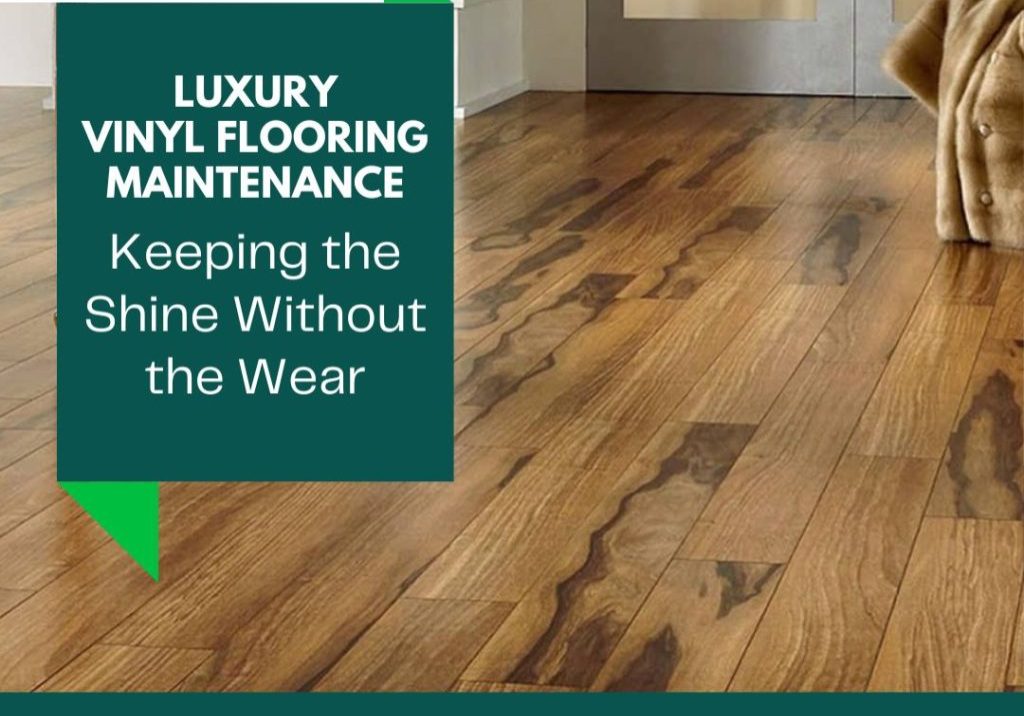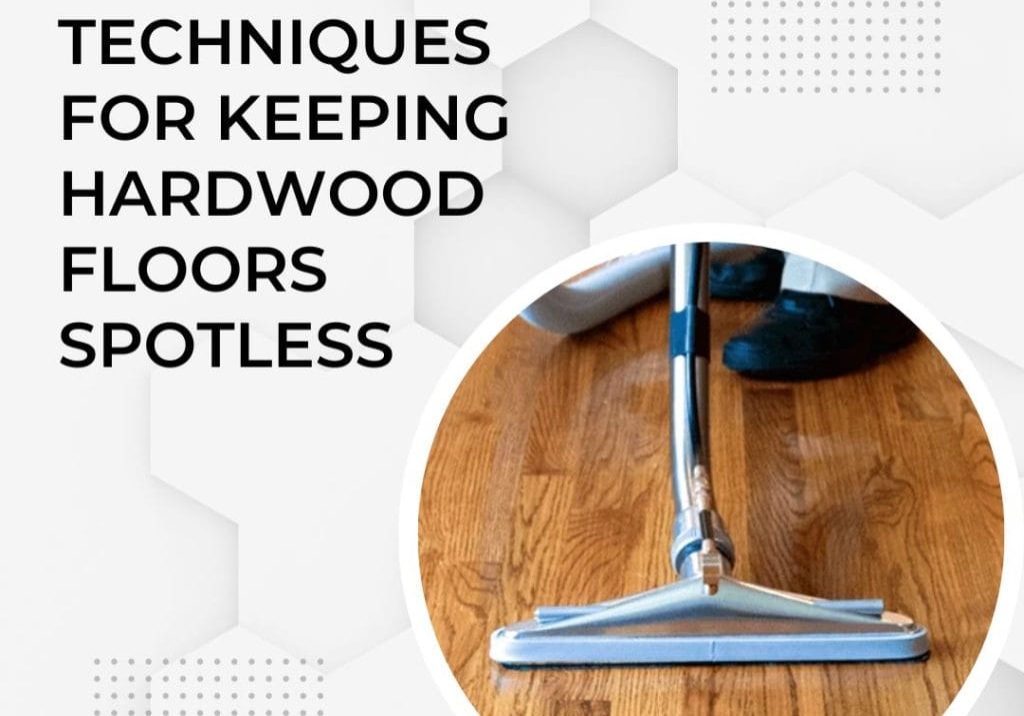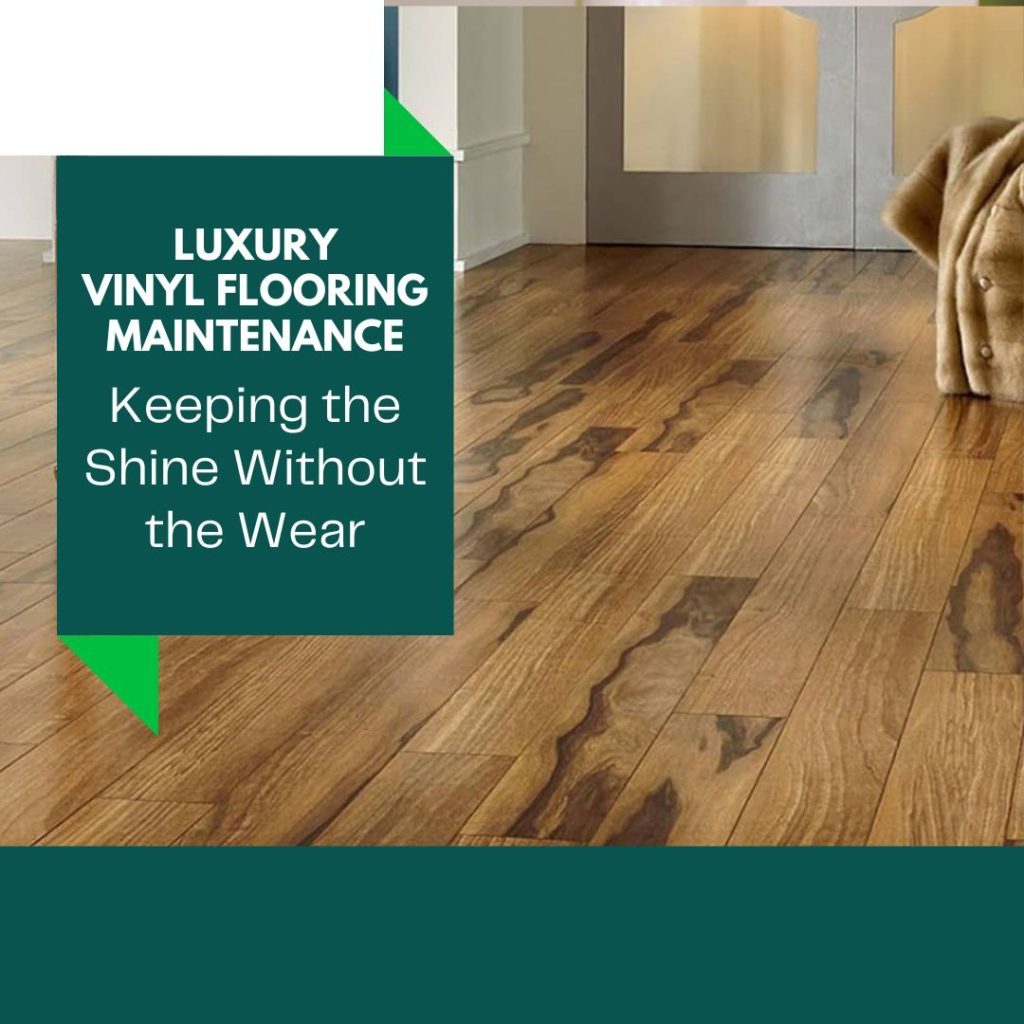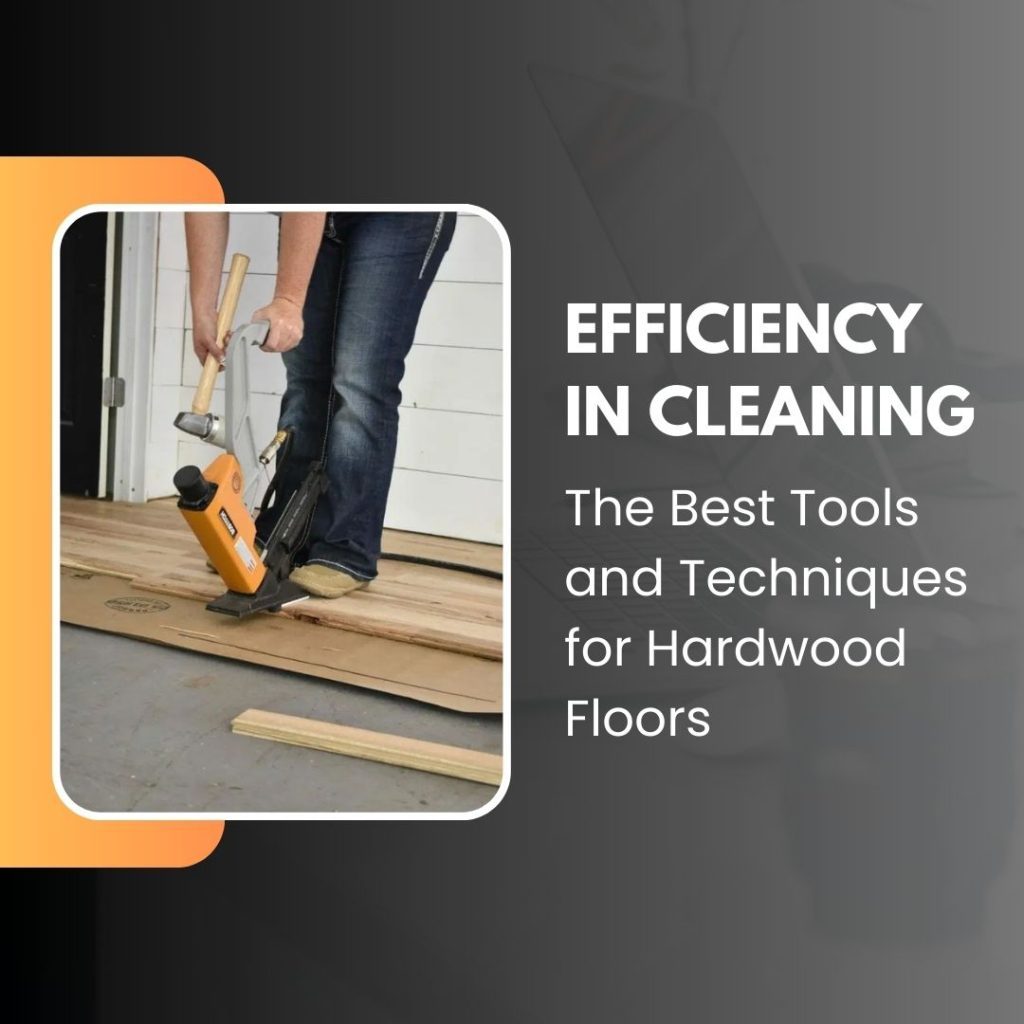Hardwood floors are a timeless classic, offering unmatched elegance and durability. However, maintaining their luster requires regular refinishing – a process that breathes new life into worn-out surfaces. As a business owner, you might wonder, “How often do hardwood floors need to be refinished?” or “How long does hardwood flooring last?” These are crucial factors to consider, as the appearance of your premises directly impacts your business’s image. Refinishing not only heightens aesthetic appeal but also extends the longevity of your hardwood flooring, making it a wise investment. Stay tuned as we delve deeper into the refinishing process and its necessity for your business.
Determining the Refinishing Frequency
There is more than one-size-fits-all answer when determining the frequency of hardwood floor refinishing. It depends on several factors, including the type of business you run, the foot traffic the floors endure, and the initial quality of the wood. This section will guide you in understanding these factors, helping you make an informed decision about the longevity of your hardwood flooring.
Determinants of Refinishing Need
Foot Traffic: The frequency of hardwood floor refinishing is primarily influenced by the level of foot traffic. High-traffic businesses like restaurants or retail stores may need to refinish their floors more frequently, possibly every 2-3 years, to maintain their appeal and durability.
Type of Wood: The type of wood also plays a significant role. Harder woods like oak or maple tend to withstand wear and tear better than softer ones like pine, thus requiring less frequent refinishing.
Previous Care: The care and maintenance previously given to the floors significantly impact their longevity. Regular cleaning and immediate addressing of spills and scratches can extend the time between refinishing, ensuring your hardwood flooring lasts longer.
General Guidelines for Refinishing Timelines
Hardwood floors in a business setting should be refinished every 3-5 years. This timeline can vary with the level of foot traffic and the type of wood used. For high-traffic businesses, consider a 2-3 year refinishing schedule. A 5-7 year interval may suffice for those with moderate foot traffic. Lastly, refinishing may only be necessary in cases with minimal foot traffic every decade. It’s pivotal to remember, though, that these are guidelines, and the specific circumstances of your hardwood flooring will influence the actual refinishing timeline. Regular evaluation of your floors will help determine the ideal refinishing schedule.
Signs That Your Hardwood Floor Needs Refinishing
Recognizing when your hardwood flooring requires refinishing can be tricky, especially if you need to know what signs to look for. It’s essential to stay vigilant and know the telltale indications that suggest it might be time to breathe new life into your hardwood floors.
Identifying Wear and Tear:
When it comes to hardwood floors, it’s important to understand that subtle signs of wear and tear over time can serve as strong indicators of the need for refinishing.
-
Scratches
Scratches are often the first sign that your hardwood flooring may need refinishing. These can occur from daily use, moving furniture, or accidents. Scratches mar the beauty of your flooring and expose the wood to further damage.
-
Discoloration
Over time, hardwood floors can exhibit discoloration due to sunlight exposure or chemical spills. Discoloration can detract from the overall aesthetic of your space. If you notice patches of faded color or stains, refinishing may be required to restore your hardwood floors’ original paint and shine.
-
Water Damage
Water can be a hardwood floor’s worst enemy. Signs of water damage like cupping, warping, or black stains suggest it’s time for a refinishing job. Regular inspection for these signs can help maintain the longevity of your hardwood flooring.
Consequences of Ignoring Refinishing in Business Spaces
Refining the refinishing needs of your hardwood floors can have serious consequences. Aesthetically, worn-out and damaged floors can significantly detract from the overall appeal of your business premises, creating a less inviting environment for customers and employees alike. This may inadvertently convey a lack of professionalism and attention to detail, impacting your business reputation.
Furthermore, neglect may result in the need for more extensive, costly repairs down the line. Over time, untreated scratches and water damage can exacerbate, leading to severe structural issues. Therefore, regular refinishing is about maintaining appearance and ensuring the longevity and durability of your hardwood flooring investment.
The Refinishing Process: What To Expect
Refinishing hardwood floors can seem daunting, particularly if you’ve never experienced it. However, understanding what to expect can alleviate stress and help you prepare adequately for this necessary maintenance step. This section will demystify the refinishing process, providing key insights into each stage, from preparation to the final touch-ups.
Step-by-Step Overview of the Refinishing Process
- Preparation: First, the room is emptied, and the floor is cleaned thoroughly to remove dust and debris.
- Sanding: A heavy-duty sander is then used to remove the old finish and level the floor, preparing it for the new finish.
- Staining: A stain can be applied to the sanded floor for a color or tone. This step is optional and depends on personal preference.
- Sealing: After adequately drying the stain, a sealant is applied to protect the wood and enhance its natural beauty.
- Final Touches: Once the sealant is dry, the floor is lightly buffed for a smooth finish, and furniture can be moved back into the room.
Considerations During Refinishing
Time Considerations: The refinishing process typically takes 3-5 days for an average-sized room, depending on the job’s complexity. It’s crucial to factor this into your schedule and plan accordingly to avoid disrupting your business operations.
Business Operation Considerations: The affected area will be off-limits during refinishing. This means you’ll need to temporarily adjust your business operations by relocating activities to another part of the premises or closing down entirely for a few days. Remember, this short-term inconvenience is necessary to maintain the longevity and appeal of your hardwood flooring.
Choosing the Right Time for Refinishing
Choosing the correct time to refinish your hardwood floors is an integral part of the process, ensuring minimal disruption to your business operations while optimizing the results of the refinishing project. Let’s delve into some key considerations to keep in mind when scheduling your floor refinishing.
Seasonal Considerations For Refinishing Projects
Refinishing projects ideally should be scheduled during periods of moderate humidity, such as spring or fall. Sealants may take longer to dry in high humidity, prolonging your project timeline. Conversely, excessively dry conditions could lead to cracks in the newly applied finish. Therefore, planning the refinishing work with seasonal variations in mind can significantly enhance the results and efficiency of your hardwood floor refinishing project.
Planning Refinishing Around Business Schedules
When scheduling a refinishing, it’s crucial to consider your business operations. Opt for a period where business activity is typically slow or a timeframe where you can afford to close down temporarily. For instance, schedule the refinishing over a long weekend or during a planned holiday closure. This ensures your business operations experience minimal disruption while prioritizing the longevity and aesthetic of your hardwood flooring.
Cost Considerations for Hardwood Floor Refinishing
When contemplating hardwood floor refinishing, understanding the financial aspects is crucial to making an informed decision. Let’s investigate the cost considerations you should consider as you plan your refinishing project.
Costs and Factors that Affect Pricing
The cost of hardwood floor refinishing can vary widely, depending on several factors. You can expect to pay between $1.50 and $4.00 per square foot for a basic refinishing job. However, costs can escalate if the floor is in poor condition or if you opt for a higher-end finish.
Several factors can affect the final cost. For instance, larger areas typically cost less per square foot due to economies of scale. The condition of the floor is another key factor – floors with extensive damage or warping will require more preparation work and hence increase the cost. Lastly, your choice of finish can also impact the price, with luxury finishes costing more than standard ones.
Investment Perspective for Business Owners
From an investment perspective, refinishing your hardwood floors can significantly enhance the value and appeal of your business premises. While the upfront cost may seem substantial, remember that maintaining your feet can prevent more expensive repairs in the future. Moreover, a well-maintained hardwood floor can contribute to a professional business image, potentially attracting more customers and boosting revenue. Therefore, regular refinishing is indeed a worthwhile investment for your business.
Maximizing the Lifespan of Your Hardwood Floors
Understanding how long hardwood flooring lasts and how often hardwood floors need to be refinished is essential, but knowing how to maximize the lifespan of your hardwood floors is equally crucial. This section will provide practical tips and strategies to help extend the life of your hardwood floors and ensure their appeal and function for years to come.
Maintenance Tips Post-Refinishing
Regular Cleaning: Regular cleaning is the first step in maintaining the longevity of your hardwood floors post-refinishing. Sweep or vacuum the floors every few days to prevent dust and dirt from scratching the surface. Use cleaning products specifically designed for hardwood floors to avoid damaging the finish.
Avoid Water Damage: Avoid water damage by promptly wiping up any spills. Prolonged exposure to water can cause the wood to warp and damage the finish. Consider using mats or rugs in moisture-prone areas, such as entryways and kitchen sinks.
Prevent Scratches: Prevent scratches by using felt pads under furniture legs. Lift rather than drag furniture when moving it. Small measures like these can go a long way in preserving the pristine condition of your hardwood floors.
Timely Consider Resurfacing Versus Refinishing
Resurfacing and refinishing are two distinct processes in hardwood floor maintenance.
Resurfacing is typically considered when the wood has deep scratches, dents, or damage that simply refinishing can’t rectify. This process involves sanding the wood to its bare state, restoring the surface level, and applying a fresh finish.
Refinishing is a less invasive process, ideal for floors that still have a good base but look dull, tired, or have minor scratches. Refinishing involves lightly sanding the top layer and applying a new finish coat. When considering how long hardwood flooring lasts, remember that proper and timely resurfacing or refinishing plays a crucial role.
Professional Refinishing vs. DIY: Making the Best Choice for Your Business
When it comes to refinishing your hardwood floors, deciding between DIY and professional services is a crucial decision. This section will explore both options, helping you make the best choice for your business based on cost, time, quality, and the complexity of the task.
The Benefits of Professional Refinishing Services
-
Expertise and Quality
Professional refinishers bring expertise and attention to detail that is hard to match with DIY efforts. Their vast experience ensures a high-quality finish that enhances the beauty of your hardwood floors and extends their lifespan.
-
Time Efficiency
Professionals are well-equipped and trained to handle large jobs efficiently. They can complete the refinishing job within a stipulated time frame, reducing downtime for your business.
-
Advanced Equipment
Professional services have access to industrial-grade equipment, which ensures seamless and thorough refinishing, thus enhancing the longevity and durability of your floors.
-
Aftercare Support
Most professional refinishers offer aftercare services and guidance, helping you maintain the newly refinished floor in top condition for years.
Risks Associated With DIY Refinishing
While DIY refinishing might initially seem like a cost-effective solution, the risks of improper handling and lack of professional expertise can lead to subpar results and even potential damage to your hardwood floors.
Lack of Expertise
DIY refinishing may seem cost-effective, but lacking professional expertise could lead to mistakes. Improper application of finishing products or incorrect sanding techniques may damage your hardwood floors.
Time and Effort
Refinishing hardwood floors is a time-consuming and labor-intensive task. As a business owner, your time could be better spent focusing on your business operations than undertaking a complex DIY project.
Inadequate Tools
Professional refinishers possess advanced tools for thorough and smooth refinishing. DIY efforts with basic devices may yield a different quality finish, affecting how long your hardwood flooring lasts.
Health Hazards
Refinishing involves sanding and the application of chemicals that can cause health hazards if not properly handled, posing a risk to you and your employees.
Conclusion: The Long-Term Benefits of Regular Refinishing
In conclusion, understanding how long hardwood flooring lasts and how often hardwood floors need refinished is vital in maintaining your business premises’ aesthetic appeal and longevity. Regular refinishing enhances the visual allure of your floors and prevents potential damage, saving you costly repairs in the long run. You can ensure enduring results and a workspace that radiates professionalism by scheduling routine maintenance. Remember to appreciate the power of well-preserved hardwood floors; invest in their upkeep and witness the lasting impact on your business.










